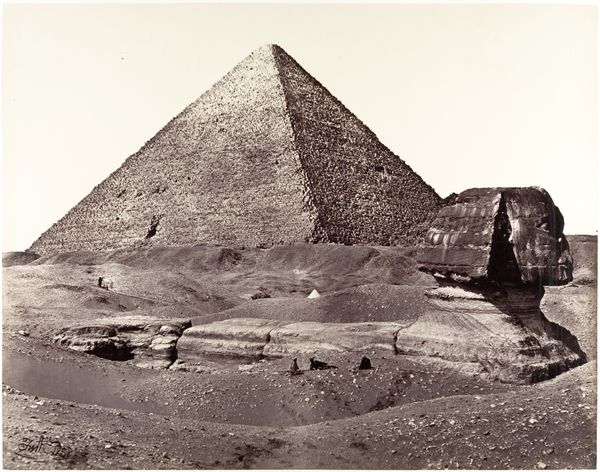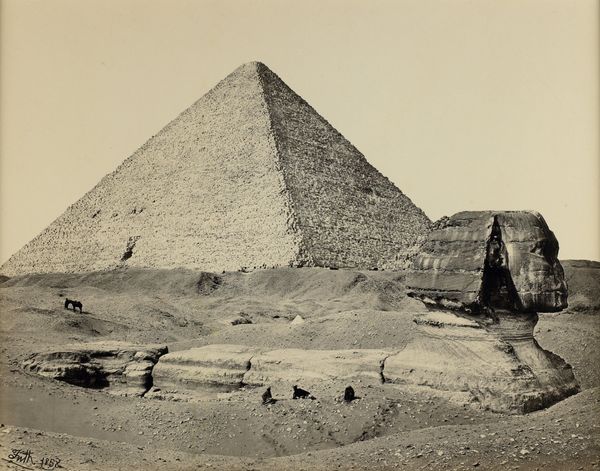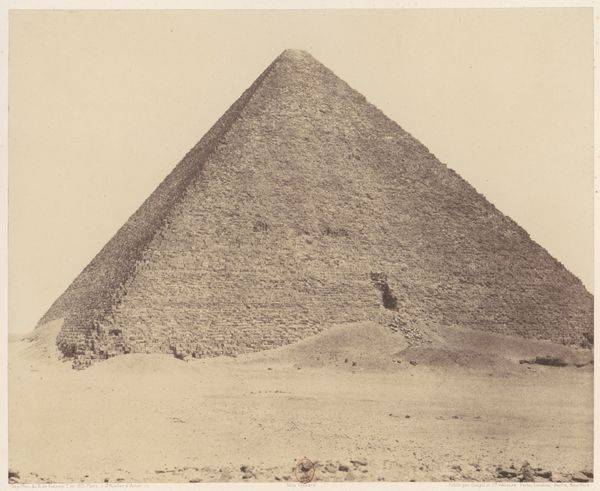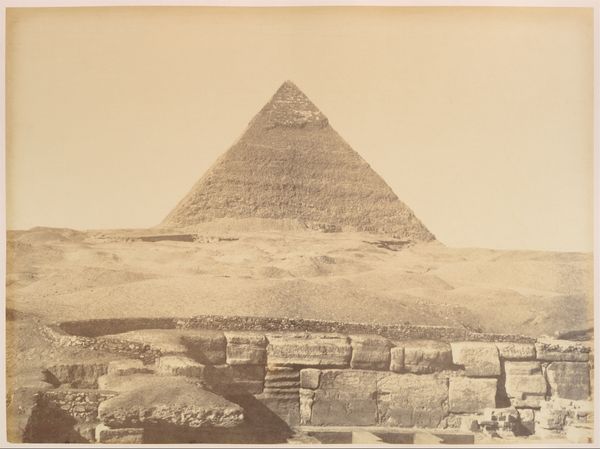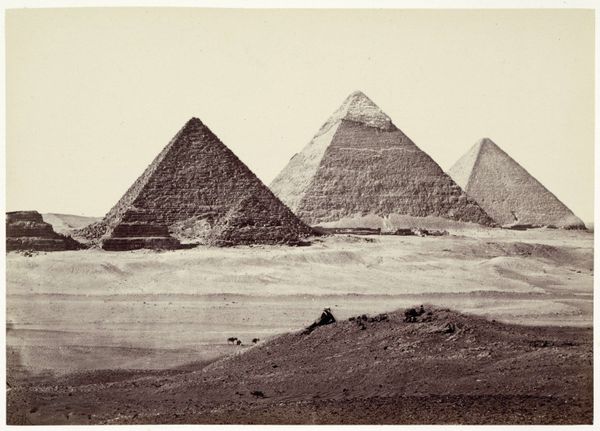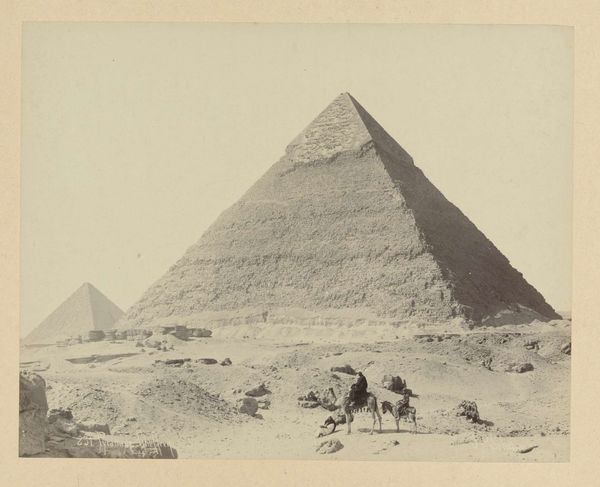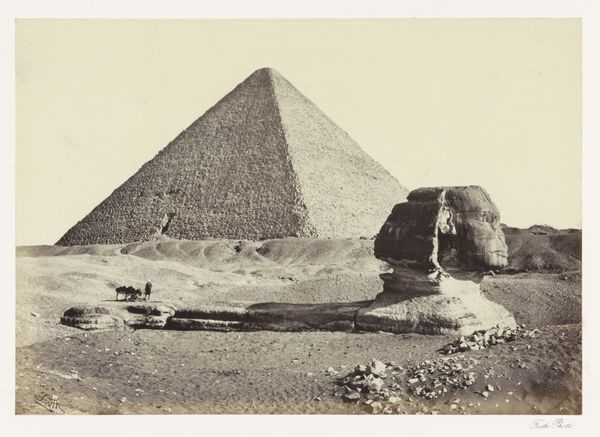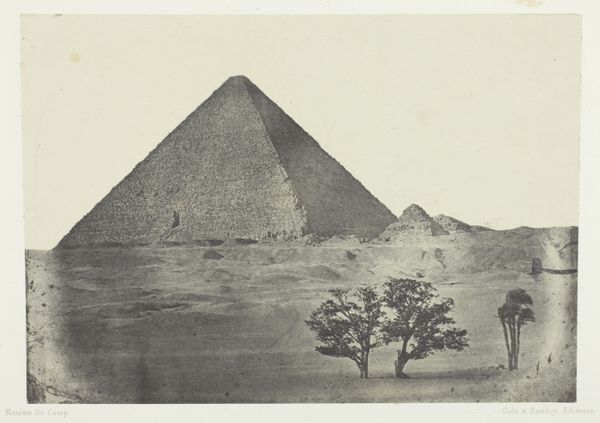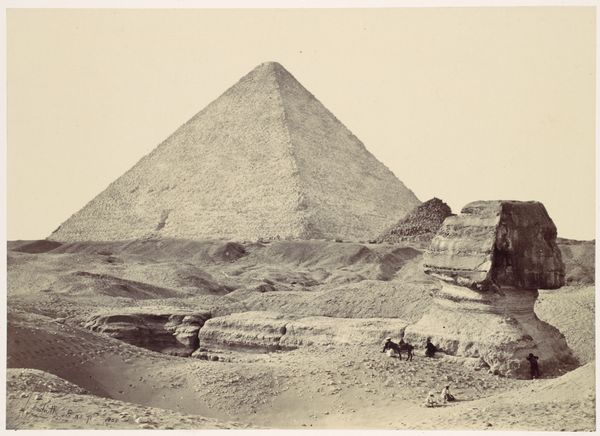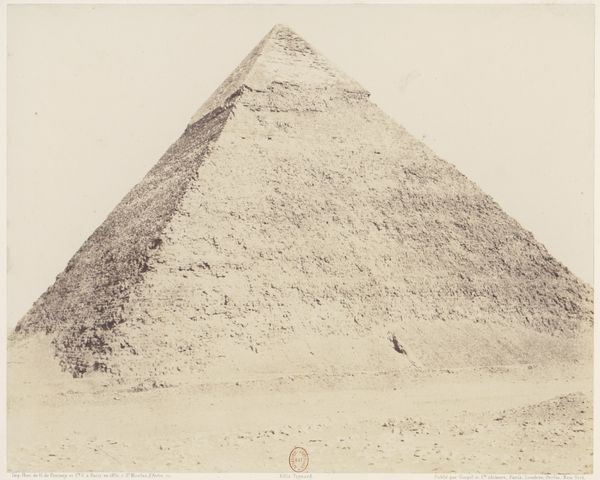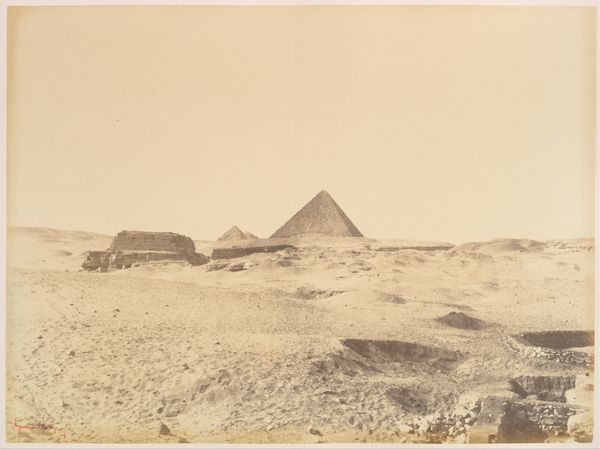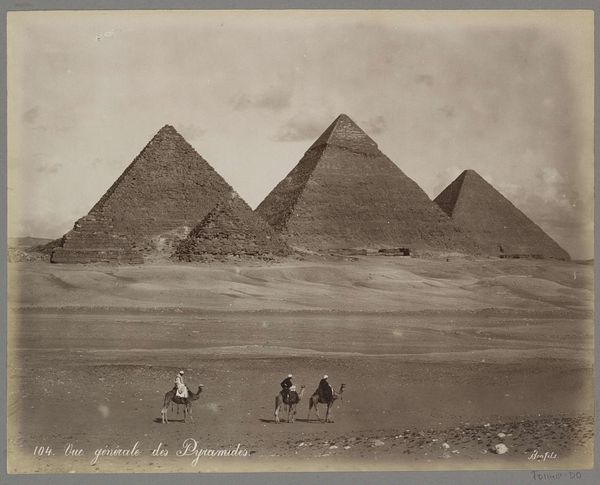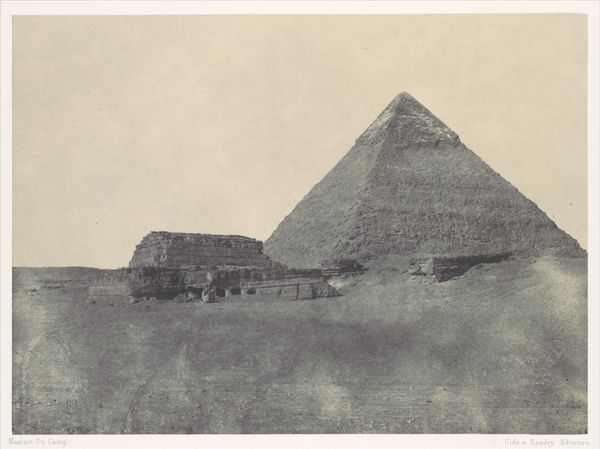
photography, gelatin-silver-print
#
black and white photography
#
landscape
#
ancient-egyptian-art
#
photography
#
ancient-mediterranean
#
gelatin-silver-print
#
monochrome photography
#
19th century
#
realism
#
monochrome
Dimensions: image: 38 × 49.3 cm (14 15/16 × 19 7/16 in.) sheet: 53.1 × 73 cm (20 7/8 × 28 3/4 in.)
Copyright: National Gallery of Art: CC0 1.0
Curator: Francis Frith's 1858 gelatin-silver print, "The Pyramids of El-Geezeh, from the South-West," presents a striking vista of these ancient monuments. Editor: My first thought is the overwhelming sense of timelessness. The stark monochrome palette accentuates the pyramids’ sheer scale, but it’s also incredibly desolate. Curator: Consider Frith's technical choices here. Photography at this time demanded immense labor, lugging heavy equipment across the desert. His dedication reveals an ambition to document, a kind of industrial approach to capturing cultural heritage. Editor: Exactly, and that industrial drive also reveals the complicated colonial gaze. The image is undeniably beautiful, but we can't ignore the power dynamics at play. Frith, a Western photographer, capturing and commodifying a landscape deeply embedded in Egyptian identity. The figures seated in the foreground become almost ethnographic studies, flattened by the composition. Curator: Certainly, the presence of the local people in the scene also indicates the social strata embedded within this photograph. How would access and privilege afforded by Frith's resources, capital, and industrial technology, contrasted with the means available to the local populace at the time influence its construction, impact, and our understanding of this image? Editor: Precisely! These pyramids are monuments built on forced labor, and the image reminds us of these harsh socio-economic realities. How might contemporary photographers, particularly those from Egypt, be engaging with this same landscape to reclaim their narratives? That's what I want to know. Curator: I see your point, there's this visual tension between preservation and the exploitation of both the physical landscape and labor surrounding it. Looking closely, you really see the layered, granular texture of both the sand and the pyramids' surface, making them physically knowable. Editor: Yes, there’s a discomfort there. A discomfort acknowledging beauty intertwined with oppressive histories. What does it mean to appreciate this image responsibly, knowing its complexities? Curator: Perhaps, appreciating this photograph requires actively engaging with this complex, and continuing to explore the multitude of stories held within this ancient place. Editor: I agree, viewing is only a beginning—a catalyst to critically investigate and actively engage with the layered meanings that a photograph like this presents.
Comments
No comments
Be the first to comment and join the conversation on the ultimate creative platform.
